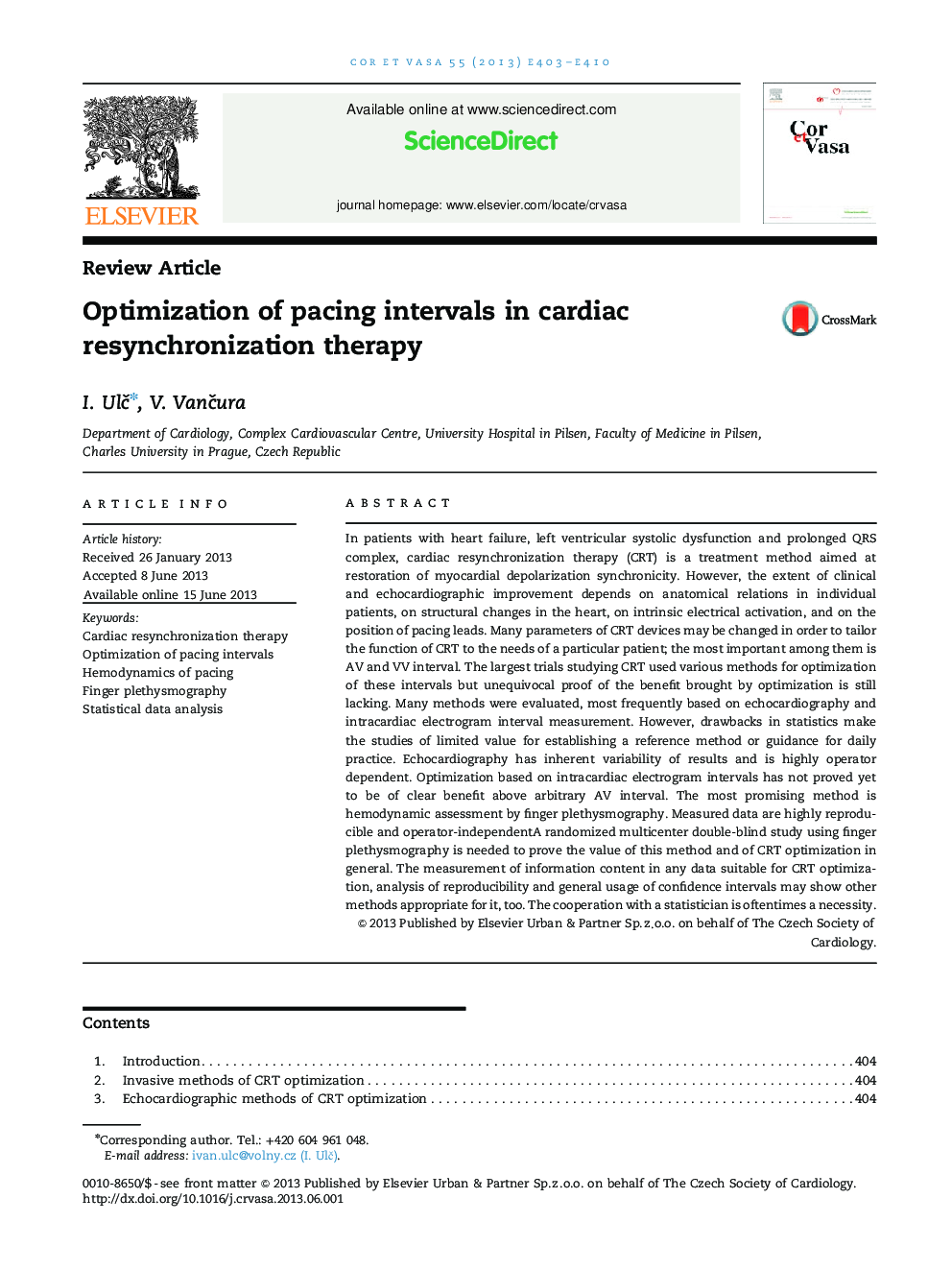| Article ID | Journal | Published Year | Pages | File Type |
|---|---|---|---|---|
| 2728419 | Cor et Vasa | 2013 | 8 Pages |
In patients with heart failure, left ventricular systolic dysfunction and prolonged QRS complex, cardiac resynchronization therapy (CRT) is a treatment method aimed at restoration of myocardial depolarization synchronicity. However, the extent of clinical and echocardiographic improvement depends on anatomical relations in individual patients, on structural changes in the heart, on intrinsic electrical activation, and on the position of pacing leads. Many parameters of CRT devices may be changed in order to tailor the function of CRT to the needs of a particular patient; the most important among them is AV and VV interval. The largest trials studying CRT used various methods for optimization of these intervals but unequivocal proof of the benefit brought by optimization is still lacking. Many methods were evaluated, most frequently based on echocardiography and intracardiac electrogram interval measurement. However, drawbacks in statistics make the studies of limited value for establishing a reference method or guidance for daily practice. Echocardiography has inherent variability of results and is highly operator dependent. Optimization based on intracardiac electrogram intervals has not proved yet to be of clear benefit above arbitrary AV interval. The most promising method is hemodynamic assessment by finger plethysmography. Measured data are highly reproducible and operator-independentA randomized multicenter double-blind study using finger plethysmography is needed to prove the value of this method and of CRT optimization in general. The measurement of information content in any data suitable for CRT optimization, analysis of reproducibility and general usage of confidence intervals may show other methods appropriate for it, too. The cooperation with a statistician is oftentimes a necessity.
